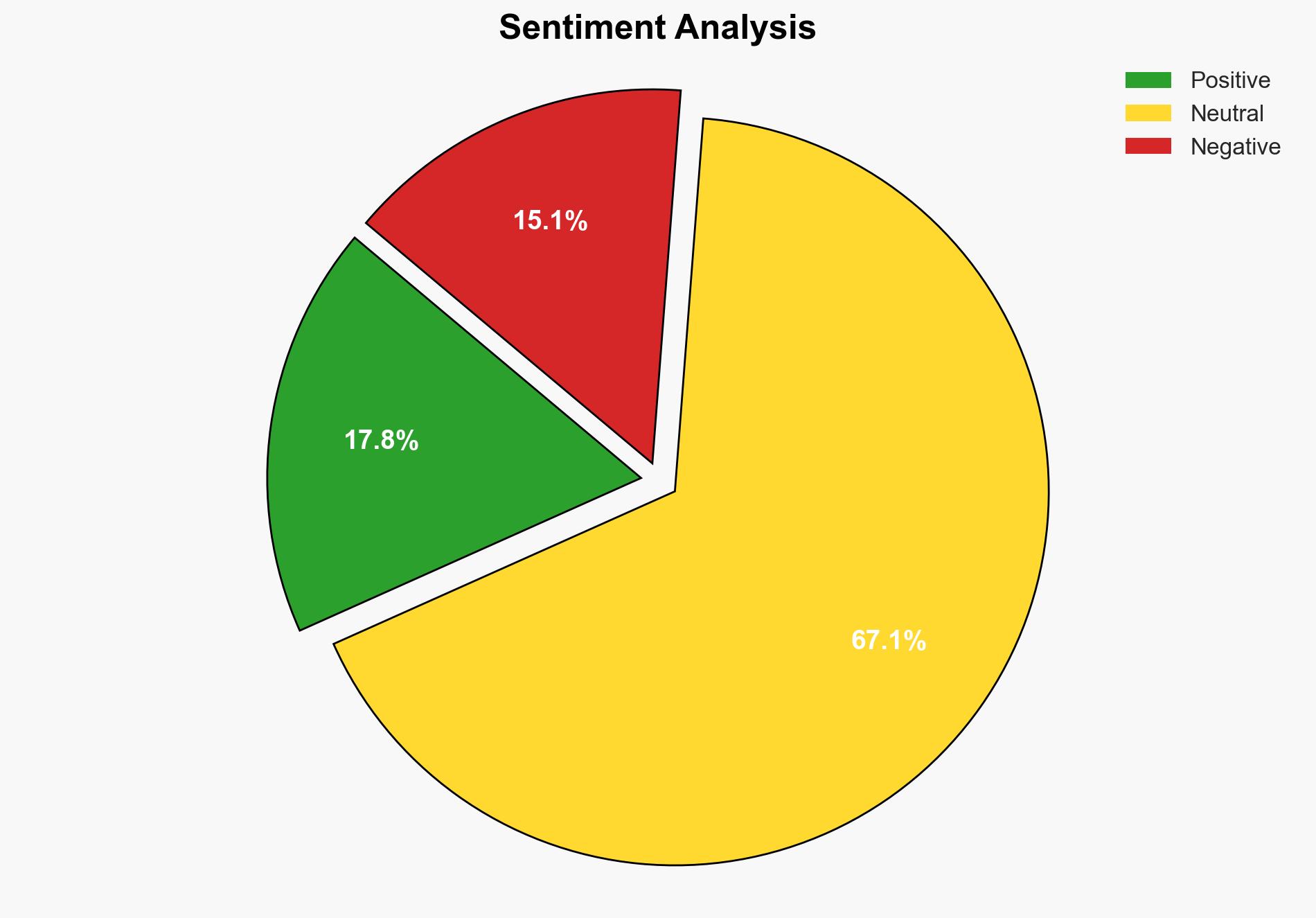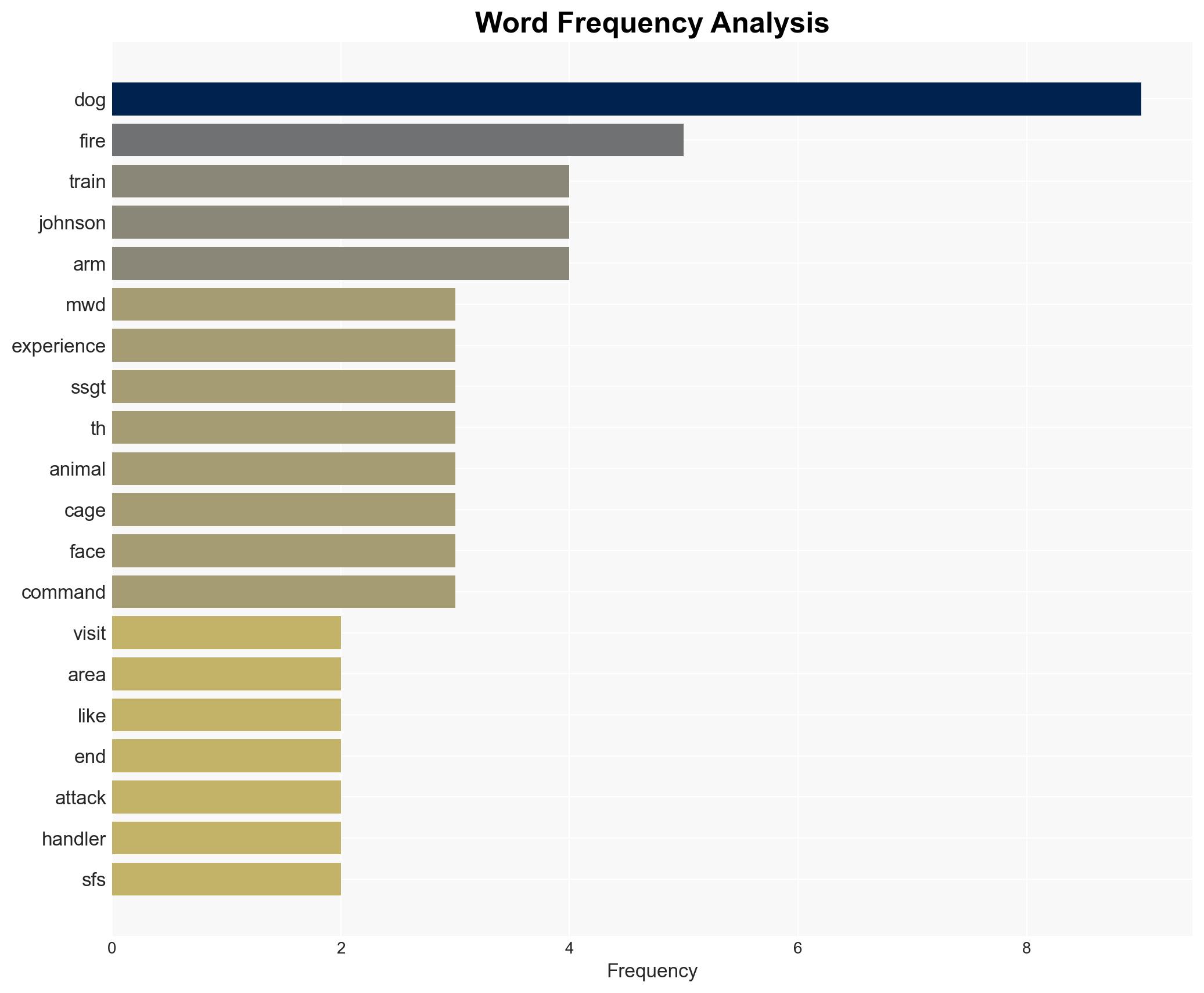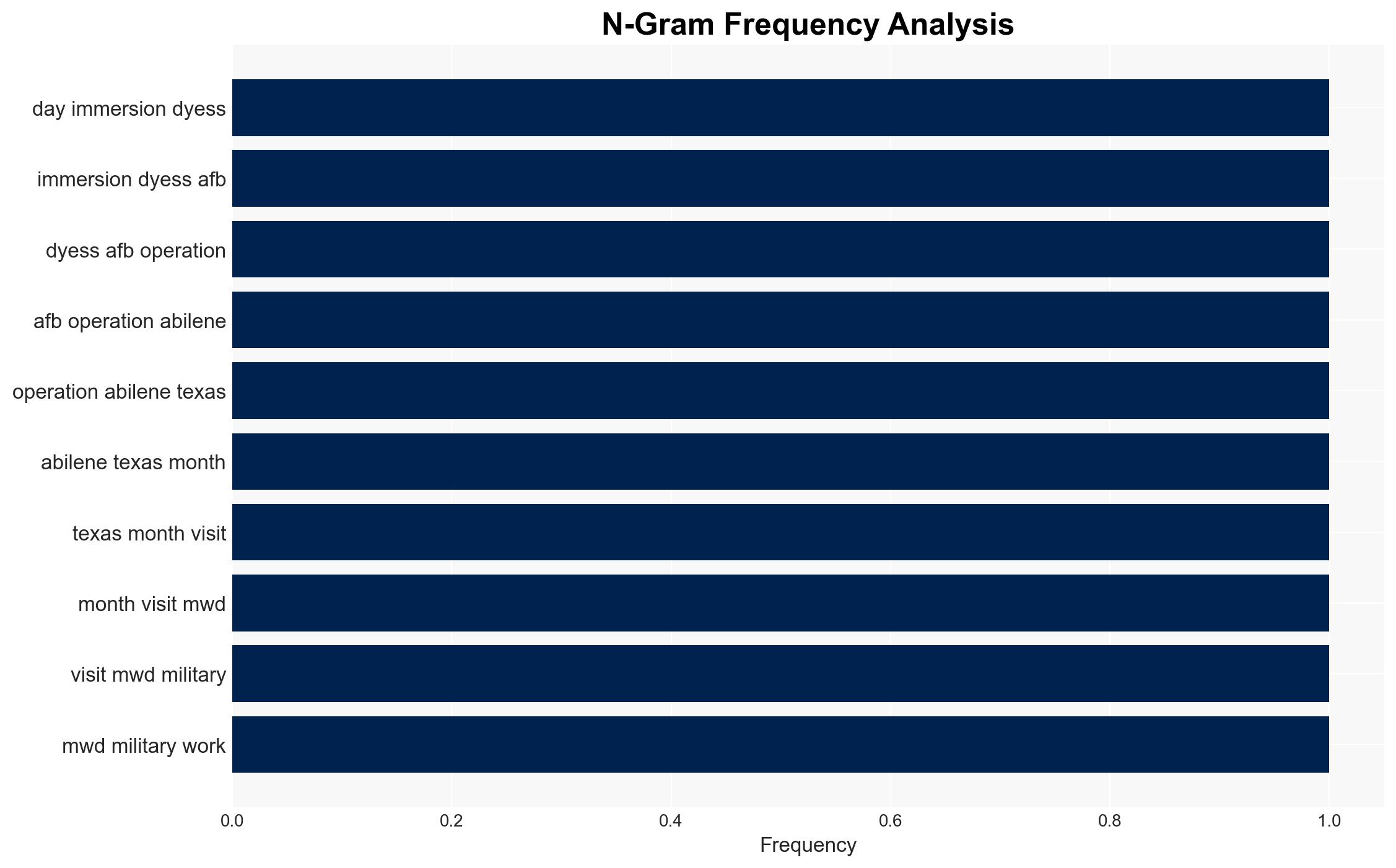Thrown To The Dogs At Dyess Not As Bad As You Think – Forbes
Published on: 2025-04-08
Intelligence Report: Thrown To The Dogs At Dyess Not As Bad As You Think – Forbes
1. BLUF (Bottom Line Up Front)
The report provides an in-depth look at the operations and training of military working dogs at Dyess Air Force Base in Abilene, Texas. Key findings indicate that the training program is rigorous and designed to ensure the dogs are well-prepared for various operational environments. The program emphasizes the importance of the dogs’ health and their role in national security. Recommendations include enhancing public awareness of the program’s benefits and exploring additional adoption opportunities for retired dogs.
2. Detailed Analysis
The following structured analytic techniques have been applied for this analysis:
General Analysis
The military working dog facility at Dyess AFB is a restricted area where dogs are raised and trained for operational readiness. The dogs, primarily of the German Shepherd breed, are trained to handle various scenarios, including patrol and detection tasks. The facility is managed by experienced handlers such as Ricardo Roque, Lucas Johnson, and Juan Lopez. The training includes simulated attack scenarios to prepare the dogs for real-world situations. The dogs are also trained to detect explosives and drugs, contributing significantly to national security efforts.
3. Implications and Strategic Risks
The training of military working dogs at Dyess AFB has several implications for national security and regional stability. The dogs’ ability to detect explosives and drugs is crucial in preventing potential threats. However, the intense training and operational demands pose risks to the dogs’ health and well-being. Ensuring the dogs’ health and longevity is vital for maintaining their effectiveness in service. Additionally, the potential for public misunderstanding of the program’s nature could impact its perception and funding.
4. Recommendations and Outlook
Recommendations:
- Enhance public outreach to improve understanding of the military working dog program and its benefits to national security.
- Explore partnerships with animal welfare organizations to facilitate the adoption of retired military working dogs.
- Implement regular health assessments and wellness programs for the dogs to ensure their operational readiness and longevity.
Outlook:
In the best-case scenario, increased public awareness and support could lead to enhanced funding and resources for the program. In the worst-case scenario, negative public perception could result in reduced support and operational challenges. The most likely outcome is a continued emphasis on the program’s strategic importance, with gradual improvements in public engagement and dog welfare practices.
5. Key Individuals and Entities
The report mentions significant individuals involved in the military working dog program at Dyess AFB, including Ricardo Roque, Lucas Johnson, and Juan Lopez. These individuals play crucial roles in the training and management of the dogs, ensuring their readiness for operational duties.




